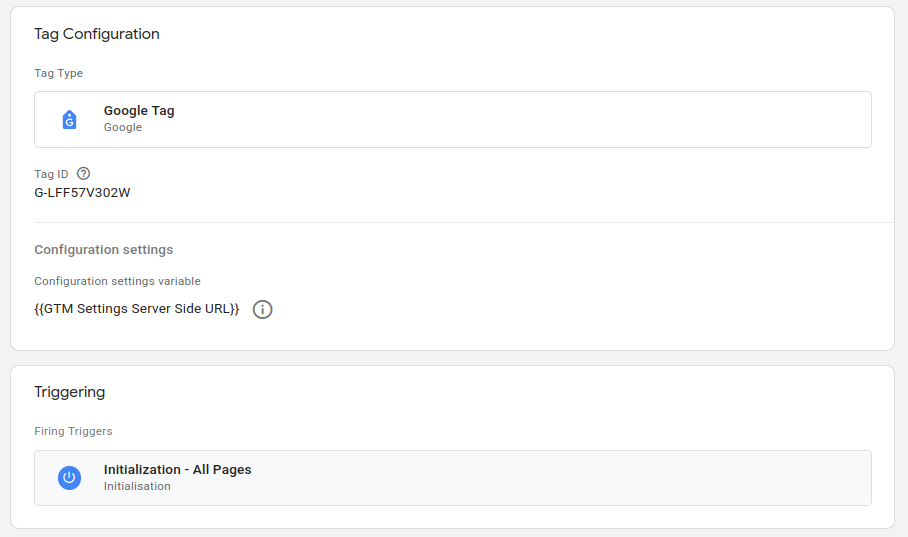Notes ⚠️⚠️⚠️
- The URL format of your program must be set to S2S: this allows the program to switch tracking links into redirection mode and validate the conversion on the server side. You can change the URL format in your program settings under general parameters.
- The conversion tag trigger must be set to an All Pages + Purchase event.
- Our tags are updated regularly — check your template notifications to apply updates.
- ⚠️ Do not send personal data (e.g., first name, last name, or email).
- Implementing a CMP remains mandatory.
- Module version: 1.2.
Required Architecture
You must have 2 GTM containers:
- Client-Side container
- Server-Side container
These two containers must communicate with each other.

Client-Side Configuration
Create the Server-Side Tag
In your Client-Side container:
- Go to Tags ➜ New
- Name it
- Tag configuration:
- Type: Google Tag Manager (Server-Side)
- Server-Side container Tag ID: GTM-XXXXXXX
- Server URL: Variable containing the server-side domain
How to find your Server-Side Tag ID
- Go to your Server-Side container
- Click on Admin
- Select Account Information
- Copy the Container ID (format: GTM-XXXXXXX)
Configure the Server URL
- Go to Variables ➜ New
- Name: Affilae – Server Side
- Value: your server-side domain (ex: https://sgtm.votresite.com)
Trigger
- Trigger: All Pages and Purchase
- Save and publish


Server-Side Configuration
Create the Affilae Server-Side Tag
In your Server-Side container:
- Go to Tags ➜ New
- Name it
- Tag type:
- Search for “Affilae – Server Side”
- If not available, import the template from the gallery
Required Variable Configuration
Key (Affilae Key)
- Variables ➜ New
- Name: affilae_key
- Value: your Affilae key (found in Settings ➜ Tracking)
Amount (Excl. Tax)
- Variables ➜ New
- Name: conversion_amount
- Event name: value (or according to your dataLayer)
Currency
- Variables ➜ New
- Name: conversion_currency
- Value: EUR (or your currency)
Affilae Tag Configuration
- Key: {{affilae_key}}
- Amount: {{conversion_amount}}
- Currency: {{conversion_amount}}
- ⚠️ Check “Allow Probabilistic Attribution” (at the bottom of the tag)
Special Trigger
⚠️ Very important: The trigger must be configured as:
Type: All Pages + Purchase

Linking the Containers
How it works
- Client-Side → Sends data to the Server-Side
- Server-Side → Processes and sends data to Affilae
- Server-Side → Sends confirmation back to the Client-Side
Verifying the link
- Enable Preview mode on both containers
- Test a full journey
- Check that the data flows correctly
Testing & Validation
Pre-launch checklist
- Affilae program set to S2S mode
- Server-Side container functional
- Client-Side tag configured with correct Tag ID
- Server-Side variables created
- Affilae Server-Side tag configured
- “Allow Probabilistic Attribution” enabled
- Trigger “All Pages + Purchase” configured
Tests to perform
- Disable ad blockers
- Enable GTM Preview mode on both containers
- Test an affiliate click ➜ conversion
Checks
- Data transmitted between containers
- Conversion recorded in Affilae
- Amounts and currency correct
Help
Tracking not working?
- Verify the Client ↔ Server link
- Check the “All Pages + Purchase” trigger
- Ensure S2S mode is enabled in Affilae
- Confirm variables are correctly mapped
- Test with a real order
- Contact Affilae Support with your configuration details

